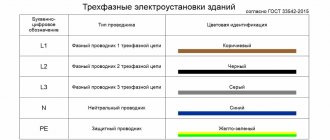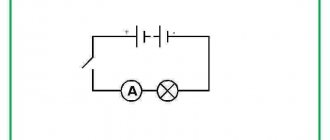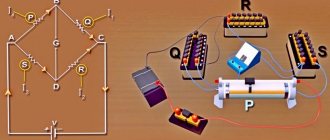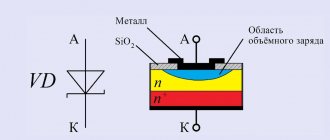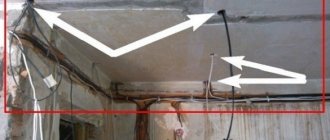Conditions for parallel operation of transformers
Parallel operation of a transformer is characterized by the special operation of the windings. The supply network is supplied to the primary circuits. The secondary winding is connected to the general network. Outgoing electricity supplies various consumers.
Network requirements
The inclusion of transformers in parallel operation is caused by certain features of the operation of electrical installations. The presented approach allows us to solve power supply problems.
By connecting power transformers in parallel, it is possible to avoid increasing the currents of the main device. The system is less susceptible to overloads. By connecting the transformer windings in parallel, the rate of failures in the electrical network is reduced. The likelihood that two transformer devices will not work at once is extremely small.
When operating high-power power equipment, it is necessary to ensure sufficient space (height) for installing the unit. In a small room, parallel operation of transformers is allowed, according to the PUE. On the territory of one electrical installation with standard space dimensions, it is possible to use the required amount of power equipment. To increase productivity and safety of units operating from different sources, it will be necessary to correctly create a parallel connection of windings.
Peculiarities
The parallel connection of current transformers must comply with the established rules and conditions for inclusion. When switched on, power units must be characterized by a certain indicator of total power. This value corresponds to the sum of the powers of the connected devices. In this case, the condition is fulfilled. The resistance values and transformation ratio in the process of switching on transformers for parallel operation are equal.
If the power values are not the same, the load is divided according to the ratings. This occurs under the condition that the transformation coefficient of the connected objects is equal.
There is a rule. It is allowed to allow connections by parallel connection of installations with a power twice as high. In this case, you need to monitor the operation of the units. Transformers do not function all the time.
Conditions
There are certain conditions for parallel operation of transformers. There are 5 points in total. Switched on devices operate correctly under the following conditions:
- Phasing. The fulfillment of this condition by transformers is mandatory. Otherwise, a short circuit will occur. The secondary circuit currents allow phasing to be performed. The phases of the connections are coordinated on the low and high voltage sides.
- The voltage on the windings of the secondary and primary coils when connected must be different. This condition is met in compliance with the insulation features. The transformation coefficient of all elements of the system must be identical. Connecting the device is allowed if the deviation of the indicator does not exceed 0.5%.
- The short circuit voltage is the same for all units. This helps the windings perform their intended functions. Loop resistance increases at high short circuit voltages. By increasing its level for a low-power unit, you can get an overload. For normal operating conditions of the system, when standards are met, the deviation between the short circuit indicators of devices does not exceed 10%.
- It is allowed to turn on a parallel connection with identical windings corresponding to each other. If this condition is not met, equalizing currents are generated by operating devices. A phase shift is observed.
- The power of the equipment should not differ by 3 times. This is an important condition for the correct operation of the system. Otherwise, a powerful device increases the load on subsequent devices. Low-power units will be overloaded. Connecting such devices is prohibited by safety regulations.
Following the listed conditions, stable, efficient operation of power equipment is ensured. The safety and reliability of the system is increased.
Failure to comply with conditions
If at least one of the conditions is not met, equipment malfunctions should be expected. You need to know in which case the operation of a switched installation will be unsafe.
When using different connection types, a phase shift appears. In this case, a current will flow through the circuits in excess of the parameters set by the manufacturer. The maximum increase in value occurs when a short circuit occurs. The phase shift in this case is 180º for transformers with winding groups 12 and 6.
The following unsafe situation is possible when the transformation ratios are unequal. The resulting voltage will appear in the secondary winding. Electricity will flow through the circuit at idle.
If the short circuit indicators do not match, the internal resistances will be unequal. At idle, no electricity will appear, but the load will be distributed in inverse proportion to their resistance. A low-power unit in such a situation will be overloaded.
Performing phasing
To avoid a short circuit, phasing is carried out at the lowest voltage terminal. If this indicator at the specified point does not exceed 1000 V, a voltmeter is used. It is adjusted to the appropriate voltage level.
One transformer TP
Single-transformer transformer transformers are also beneficial because if the operation of an enterprise is accompanied by periods of low loads, then due to the presence of jumpers between transformer transformers at the secondary voltage, it is possible to turn off some of the transformers, thereby creating an economically feasible operating mode. Economical means an operating mode that ensures minimal power losses in transformers.
In this case, the problem of choosing the optimal number of operating transformers is solved.
Such transformer substations can also be economical in terms of bringing the voltage of 6-10 kV as close as possible to power receivers, since due to the decentralization of electrical energy transformation, the length of networks is reduced to 1 kV. In this case, the issue is resolved in favor of using two single-transformer substations compared to one two-transformer substation.
Conditions for parallel operation of transformers: 5 rules, features and diagram
Some features of the operation of electrical networks and installations require the ability to include several power conversion devices. If the conditions for parallel operation of power transformers are met, most power supply indicators improve, including overload capacity and reliability.
Switching on according to this scheme requires additional work aimed at preventing incorrect connections and the occurrence of unacceptable modes and emergency situations.
In what cases is parallel mode of operation of transformers needed?
The inclusion of several electrical energy conversion devices serves several purposes:
- Increased conversion power.
- Increased reliability.
- Increased overload capacity.
- More efficient use of free space.
- Reduced operating losses during periods of low load.
An increase in consumer power requires a corresponding increase in transformer power. The purpose of parallel connection is the ability to avoid dismantling and replacing weaker equipment. In this case, an additional installation of a parallel-connected transformer is used. As a first approximation, we can assume that the permissible power of consumers in this case doubles.
A separate category of consumers has high requirements for power supply reliability. In this case, the purpose of backup transformers is the ability to provide power in the event of a failure of some of the converters.
Parallel connection of transformers is also used in the case when the installation of one more powerful design does not meet the size requirements. It is often easier to install several small-sized structures instead of one more powerful one.
Reducing conversion losses during the period of minimum consumption is achieved by turning off part of the transformers.
Features and operating diagram of parallel connection
The joint and parallel operation of power transformers should not be confused. In the first case, the devices are connected in parallel to the power supply network, but work for different consumers or for the same ones, but at different times by installing a switch. Thus, the load is distributed between power converters.
Parallel operation of transforming devices requires the fulfillment of several conditions. If at least one of them is not observed, equalizing current begins to flow through the windings of the transformers, which reduces the permissible load power, causes overload of the converter and reduces the overall efficiency.
Conditions for inclusion and work according to the PUE
The regulatory and technical documentation, in particular the Rules for the Construction of Electrical Installations (PUE), stipulate all permissible conditions for the design, installation and operation of transformer equipment.
The conditions for parallel operation are further formulated in the Rules for the Technical Operation of Consumer Electrical Installations (PTEEP). In particular, the basic connection requirements are formulated here:
- correspondence of winding connection groups;
- permissible power ratio of transformers;
- permissible norms of deviation of transformation ratios;
- short circuit voltage standards;
- phasing.
Phasing
One of the most important requirements for parallel connection of transformers is the phasing of the windings.
Basic principles for choosing a transformer
As a rule, one and two transformer substations are used in power supply systems. The use of three transformer substations causes additional capital costs and increases annual operating costs. Three-transformer substations are rarely used as a forced solution during reconstruction, expansion of a substation, with a system of separate power supply for power and lighting loads, and when powering abruptly variable loads.
At large substations (GPP), two transformers are mainly used (two independent power sources), since through such substations power receivers of power supply reliability categories I, II and III must be supplied with electricity.
When there are several points for receiving electricity at an enterprise on the GPP, as well as when powering the enterprise according to the deep input scheme at PGV, it is allowed to use one transformer when providing post-emergency power supply to the loads through secondary voltage connections with neighboring substations (PGV, GPP), with thermal power plants or other power plants. When main supplying single-transformer PGVs via 35-220 kV lines, it is recommended to connect the nearest substations to different lines or circuits with subsequent use of secondary voltage connections in post-emergency modes.
Single-transformer transformer substations 6-10/0.4-0.23 kV are used when powering loads that allow interruption of power supply for a period of no more than one day , necessary for repairing or replacing a damaged element (power supply to power receivers of category III), as well as to power power receivers of category II , subject to power reservation via jumpers at the secondary voltage or in the presence of a warehouse reserve of transformers.
Two transformer transformer substations
Two-transformer transformer substations are used when power receivers of categories I and II predominate. In this case, the power of the transformers is selected such that when one transformer fails to operate, another transformer, taking into account the permissible overload, would take on the load of all consumers (in this situation, category III power receivers can be temporarily turned off). Such substations are desirable regardless of the category of consumers, but in the presence of an uneven daily or annual load schedule.
In these cases, it is beneficial to change the connected power of transformers, for example, in the presence of seasonal loads, one or two shift work with significant changes in shift load.
Power supply to a populated area, a city microdistrict, a workshop, a group of workshops or an entire enterprise can be provided from one or several transformer substations. The feasibility of constructing one or two transformer substations is determined as a result of a technical and economic comparison of several options for the power supply system. The criterion for choosing an option is the minimum reduced cost of constructing a power supply system. The compared options must provide the required level of power supply reliability.
In power supply systems of industrial enterprises, the following unit transformer capacities are most common: 630, 1000,1600 kVA, in urban electrical networks - 400, 630 kVA. The practice of design and operation has shown the need to use transformers of the same type with the same power, since their diversity creates inconvenience in maintenance and causes additional repair costs.
